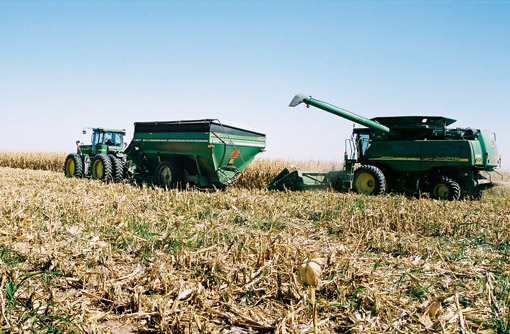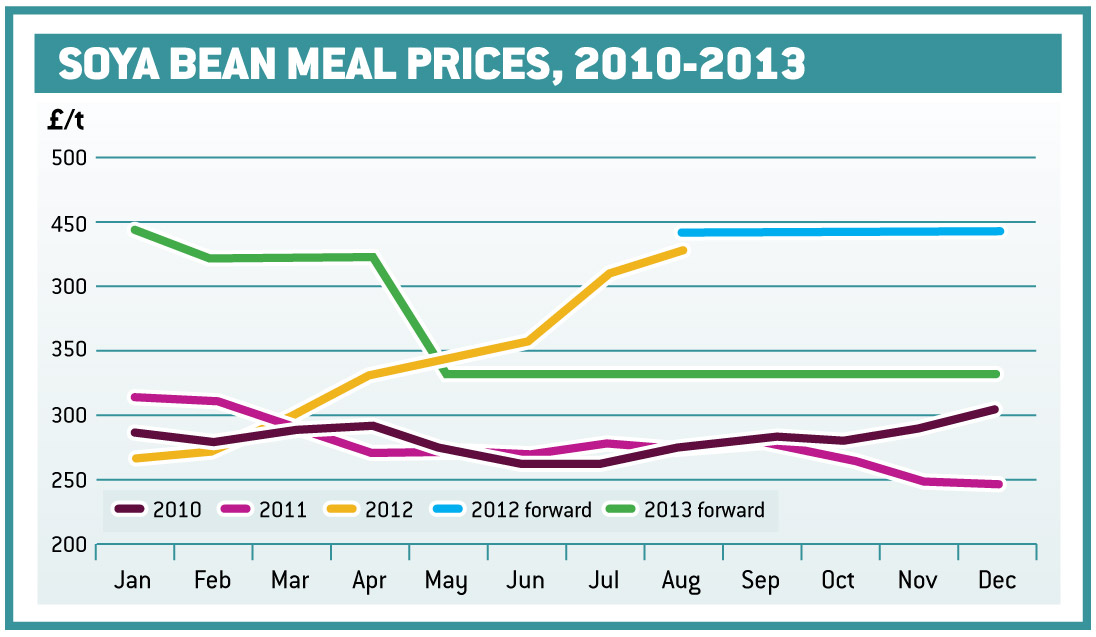Producers need the right strategy to lower feed costs

With soya bean meal costing nearly twice as much as it did a few years ago and cereal prices firming strongly, poultry producer margins are coming under intense pressure.
All sectors of the industry have been affected and, at present, there appears to be little respite in sight.
But while the fundamentals driving these markets – weakening global supply and continued strong demand – look set to remain, it doesn’t mean there aren’t opportunities to secure a “better buy”. The key is to understand what drives both feed price and feed performance, have good budgets worked out and think well ahead.
“It doesn’t matter whether you’re an integrated producer taking delivery of an articulated lorry load of soya bean meal every two weeks, or simply need 20t of a compound feed once every couple of months – one of the best tools for helping to reduce feed costs is the forward contract,” says ABN feed specialist Gregor Black.
“Compound feed prices typically track the trends seen in the raw material markets, so the ability to buy feed for the coming months or year when the price dips or settles is extremely useful. The challenge is knowing when to buy forward, and how much to buy.
“Close contact with a feed supplier that you trust is critical, and remember that the risks of trying to hit the absolute bottom of the market are far too high,” he continues. “So have a clear idea of what you can afford to pay for your feed, based on realistic estimates and a good budget, then monitor prices at least weekly to spot suitable buying opportunities.”
If an opportunity appears, Mr Black’s advice is to book 10-30% of requirements at any one time to hedge against market movements, building up a portfolio of contracts until requirements are met. The exception is when prices are clearly as low as can be expected, in which case getting 100% booked is often the right move.
“If the prices are right, we’ll see some customers booking as much as 18-20 months ahead,” he adds. “That’s a lot further forward than most poultry producers would be thinking.”
Key straights
Watching raw material markets can give a good indication as to how compound feed prices are going to react, and that includes looking at the forward contract price of key straights, such as soya bean meal and wheat. Currently, for example, soya bean meal contracts for May-October 2013 delivery are around 25% below the spot price, (£332/t versus £444/t), so, although not comparing favourably against 2010-2011 prices, it’s still lower than the average price for the current year to date (£340/t). (See graph).
“Compared with where prices have gone this year, that May-October 2013 period looks better value, and forward contracts on poultry compound feeds will reflect that trend,” says Mr Black. “Get a quote from your supplier, and if you’ve got your budgets worked out and can make a profit at that price, then it makes good business sense to book at least some forward cover.

“The key point to remember is that, yes, prices may fall between now and then, but at the moment it’s also possible that they could go higher. So reduce the risk by locking in to your budget rather than chasing a lower price that may or may not appear.”
Maximise efficiency
It’s also important to focus on the types and quality of feed being bought. According to ABN poultry nutritionist John Round, when the feed markets are rising, maximising feed efficiency should be a top priority.
“There’s always a danger that producers will react to higher compound prices by cutting corners or choosing ‘cheaper’ feeds,” he says. “The problem is that this often results in much poorer feed conversion efficiency, and an overall increase in feed costs per unit of output.
“It’s definitely worth focusing on what the essentials in the ration are, perhaps avoiding some of the extras that aren’t always necessary and reducing wastage by minimising overfeeding. But it’s just as important not to underfeed or cut out anything that will reduce performance, either straight away or in the future.”
There’s even a case for switching to a higher quality, more expensive feed that’s better value in terms of improved efficiency and performance, Mr Round claims. “As always, careful budgeting is the key, plus good nutritional advice on what to buy and good market advice on when to buy it.”
